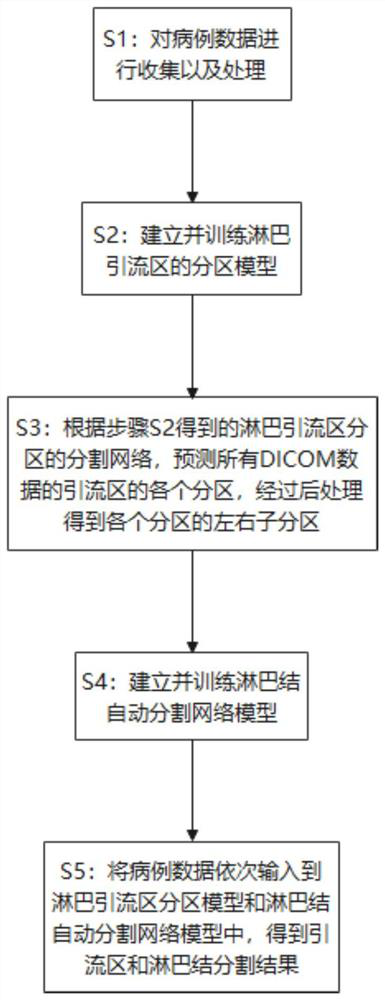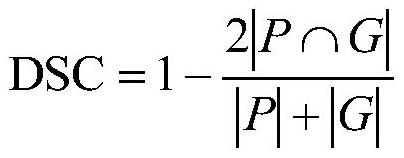Automatic delineation method for drainage area and metastatic lymph node of head and neck nasopharyngeal carcinoma
A technology for lymph node and nasopharyngeal cancer, applied in the field of medical image processing, can solve the problems of inaccurate boundaries, heavy burden on doctors, low accuracy, etc., to reduce false positive areas, improve delineation efficiency, and ensure accuracy.
- Summary
- Abstract
- Description
- Claims
- Application Information
AI Technical Summary
Problems solved by technology
Method used
Image
Examples
Embodiment Construction
[0041] In order to enable those skilled in the art to better understand the solutions of the present invention, the present invention will be further described in detail below in conjunction with specific embodiments.
[0042] The present invention provides an automatic delineation method for the drainage area and metastatic lymph nodes of head and neck nasopharyngeal carcinoma. Firstly, each partition of the drainage area is segmented, and then the image range of the segmented lymph nodes is narrowed according to the prediction results of each partition, so that the network pays more attention to the drainage. Inside the area, reducing false positive areas. The overall process is as follows figure 1 As shown, it specifically includes the following steps:
[0043] S1: Collect and process case data.
[0044] The case data include DICOM images and the corresponding outline data of lymph nodes and drainage areas drawn by doctors.
[0045]Specifically, firstly, the DICOM images...
PUM
 Login to View More
Login to View More Abstract
Description
Claims
Application Information
 Login to View More
Login to View More - R&D
- Intellectual Property
- Life Sciences
- Materials
- Tech Scout
- Unparalleled Data Quality
- Higher Quality Content
- 60% Fewer Hallucinations
Browse by: Latest US Patents, China's latest patents, Technical Efficacy Thesaurus, Application Domain, Technology Topic, Popular Technical Reports.
© 2025 PatSnap. All rights reserved.Legal|Privacy policy|Modern Slavery Act Transparency Statement|Sitemap|About US| Contact US: help@patsnap.com


